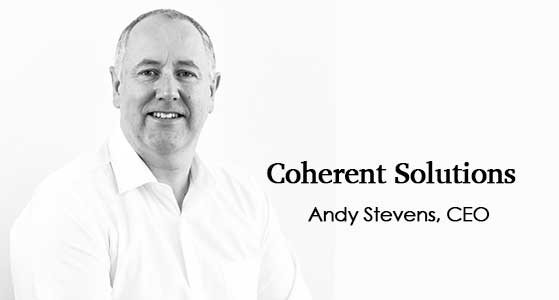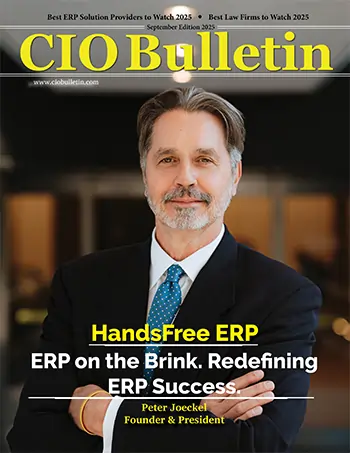Business excellence award 2021
CIO Bulletin

Optical communication systems transmit information optically through fibers. This is done by converting the initial electronic signals into light pulses employing laser or light-emitting diode light sources. The light launched at one end of an optical fiber is confined to the fiber core and propagates along it over long distances. At the other end of the system the light pulses are detected by photodiodes and converted back into electronic signals, which, in telephone applications, finally generate sound. In such a system it is crucial to transmit the light with minimum attenuation or low optical loss. Coherent Solutions was started 8 years ago with a challenging goal; to deliver the world’s highest-performing test and measurement instruments for optical communications. Coherent Solutions’ BERTPXIe is a 2 or 4-channel PPG and Error Detector for the design, characterization and production test of optical transceivers and opto-electrical components at data rates up to 30 GB/s.
Relative Intensity Noise (RIN)
Semiconductor laser Relative Intensity Noise (RIN) is an important parameter that can cause significant degradation to the performance of fibre optic communications links. It is important for both laser manufacturers and systems designers in understanding how RIN is measured to ensure reliable, accurate and repeatable results. The laser intensity fluctuation is due primarily to the interference between the stimulated emission and the spontaneous emission from the source. In a direct detection system, these two different frequencies beat since the electric field is squared in the photodetector. The intensity noise of a laser can vary based on the laser design and its properties.
Calculating RIN
RIN is calculated from electrical power densities and not from optical power densities. It is performed in this manner since the intensity noise is a result of beating at the photodetector and historically the measurement arises from intensity based signal to noise. This is a problem since the average power and the time varying power might be measured in different instruments with different photodetector responsivities, different load impedance and different transimpedance gains. In most cases the average power of the measurement will be obtained from very accurate optical power meters. The electrical power densities are usually measured with an RF spectrum analyzer or real-time digitizers (Fast Fourier transforms). So it is important to properly reference them back to the correct domain to get the appropriate results.
Measuring Laser Linewidth
Low linewidth lasers are important for use in systems such as coherent communications, fiber optic sensors, interferometric sensing and gas detection. Typically, linewidths vary greatly depending on the type of laser; they can be as large as tens of nanometers for powerful broadband dye lasers down to as low as a few Hz for lasers employing ultra-stable reference cavities. The linewidth of a laser is a measure of the full width at half maximum (FWHM) of the optical spectrum, and is typically given in terms of frequency; it is strongly related to the temporal coherence and is characterized by the coherence length/time of the laser. The finite linewidth of a continuous wave laser is due to the phase noise of the electric field and may occur as a form of continuous frequency drift, sudden phase jumps or a combination of both. Fundamentally, this phase noise is a combination of quantum noise and technical noise; technical noise arises from sources such as vibrations, temperature fluctuations and power fluctuations. Measurements of linewidths larger than ~10GHz can be easily achieved with standard diffraction type optical spectrum analyzers, however for linewidths much lower than the resolution of these devices other methods must be employed. These methods usually involve mixing the laser under test with a reference laser and measuring the beat signal produced by this mixing on a high speed photodiode with an electrical spectrum analyzer. The general principle is that the two uncorrelated optical fields interfere on the detector, causing the underlying phase noise of both lasers to be converted into intensity variations that can be displayed on an electrical spectrum analyzer. The resulting electrical spectrum is the convolution of the reference laser's spectrum with that of the laser under test. A common variation to this technique, called the delayed self-heterodyne method, offers a simple way to perform linewidth measurements without the need for a low linewidth reference laser. This method involves the mixing of the test laser with a delayed and frequency shifted replica of itself. The resulting interference signal is centered at the modulation frequency which was used to frequency shift the delayed replica. The detected electrical spectrum is the convolution of the optical spectrum of the test laser with itself. This resulting spectrum is always symmetric and thus cannot measure any asymmetries in the laser's optical spectrum. For Lorentzian shaped spectra the linewidth of the laser is simply half that of the FWHM of the measured interference signal.
Meet the leader behind the success of Coherent Solutions
Andy Stevens, PhD is the CEO of Coherent Solutions. Andy is a result-focused professional, offering comprehensive experience and visible achievements in the development and manufacture of opto-electronic, photonic and electronic products. He has a proven track record for building and leading successful product teams that take products from conception through to high-volume manufacturing. Andy is acknowledged for his ability to develop and maintain long-term successful relationships with partners, suppliers, and customers around the globe.
“Our expertise in harnessing, manipulating and measuring the physical properties of light enables us to solve complex test and measurement challenges across a broad range of applications and industries.”







